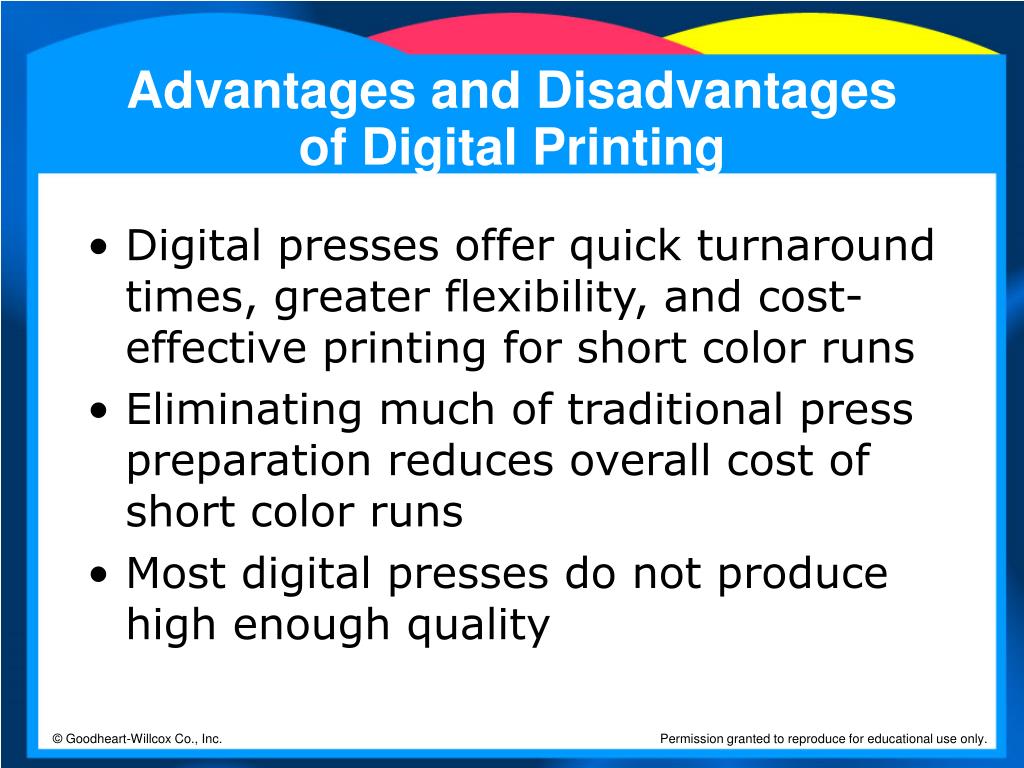7 Simple Techniques For Digital Printing
The Definitive Guide for Digital Printing
Table of ContentsLittle Known Facts About Digital Printing.The Ultimate Guide To Digital PrintingAn Unbiased View of Digital Printing10 Simple Techniques For Digital PrintingNot known Facts About Digital PrintingThe Ultimate Guide To Digital Printing
Variable data printing, such as straight mail with individualized codes and addresses, is ideally fit for electronic printing. Digital fast printing just requires four steps of design, testimonial, printing and binding to get every little thing done. Digital quick printing has an unparalleled advantage: print on need.According to PMMI, digital printing enables brands and producers to respond promptly to customer needs while improving the supply chain, lowering warehousing price and waste, and taking pleasure in faster time to market. That all noises wonderful, yet just how does this innovation do all that? The major differentiator of these technologies is that there are no set-up costs and no plates with electronic printing.
Excitement About Digital Printing
According to Wikipedia, the greatest distinction in between electronic printing and standard methods such as lithography, flexography, gravure, or letterpress - Digital Printing is that there is no need to change printing plates in digital printing, whereas in these analog printing methods home plates are repetitively changed. This leads to quicker turnaround time and reduces cost when making use of electronic printing.
Speedy manufacturing suggests obtaining your item to market much faster. It also means it's easier and faster to make changes later on, when you change a recipe, add a SKU, or produce seasonal product packaging. Digital printing is highly versatile, so it's very easy to make changes to the plan layout rapidly. All of it goes back to the plates.
With standard printing approaches, short-run printing is just not feasible. Due to the fact that a terrific layout can make or break your product, electronic printing continually develops top quality, clear and colorful graphics each time.
Digital printing is the process of printing digital-based pictures directly onto a selection of media substratums. There is no requirement for a printing plate, unlike with offset printing. Digital files such as PDFs or desktop posting files can be sent directly to the digital printing press to print on paper, photo paper, canvas, material, synthetics, cardstock and various other substratums.
Little Known Facts About Digital Printing.
According to PMMI, electronic printing allows brand names and makers to respond quickly to customer demands while improving the supply chain, reducing warehousing expense and waste, and taking pleasure in faster time to market. That all noises fantastic, but just how does this innovation do all that? The significant differentiator of these modern technologies is that there are no set-up costs and no plates with electronic printing.
According to Wikipedia, the best difference between digital printing and conventional techniques such as lithography, flexography, gravure, look at here now or letterpress is that there is no demand to change printing plates in electronic printing, whereas in these analog printing approaches home plates are repetitively changed. This leads to quicker turnaround time and reduces expense when making use of digital printing.

The Best Strategy To Use For Digital Printing
More supply can imply even more waste later on. With standard printing methods, short-run printing is simply not feasible. Since a fantastic design can make or break your product, electronic printing continually develops high-grade, clear and vivid graphics each time. Digital printing on adaptable bags includes the brilliant, vibrant, and accurate graphics that almost bid consumers to reach out and touch them.

According to PMMI, digital printing allows brand names and producers to respond promptly to customer demands while improving the supply chain, reducing warehousing price and waste, and appreciating faster time to market. That all audios wonderful, yet how does this technology do all that? The major differentiator of these innovations is find out that there are no set up fees and no plates with electronic printing.
A Biased View of Digital Printing
According to Wikipedia, the best distinction in between electronic printing and conventional techniques such as lithography, flexography, gravure, or letterpress is that there is no need to change printing plates in electronic printing, whereas in these analog printing techniques the plates are repeatedly changed. This leads to quicker turnaround time and decreases expense when using electronic printing.
Rapid production implies getting your product to market much faster. It also means it's less complicated and faster to make changes in the future, when you alter a recipe, include a SKU, or produce seasonal packaging. Digital printing is very adaptable, so it's very easy to make adjustments to the package design promptly. Everything returns to home plates.

A Biased View of Digital Printing
Digital printing is the procedure of printing digital-based photos click this site directly onto a variety of media substratums. There is no demand for a printing plate, unlike with offset printing. Digital documents such as PDFs or desktop posting documents can be sent directly to the digital printing machine to publish on paper, image paper, canvas, textile, synthetics, cardstock and other substratums.